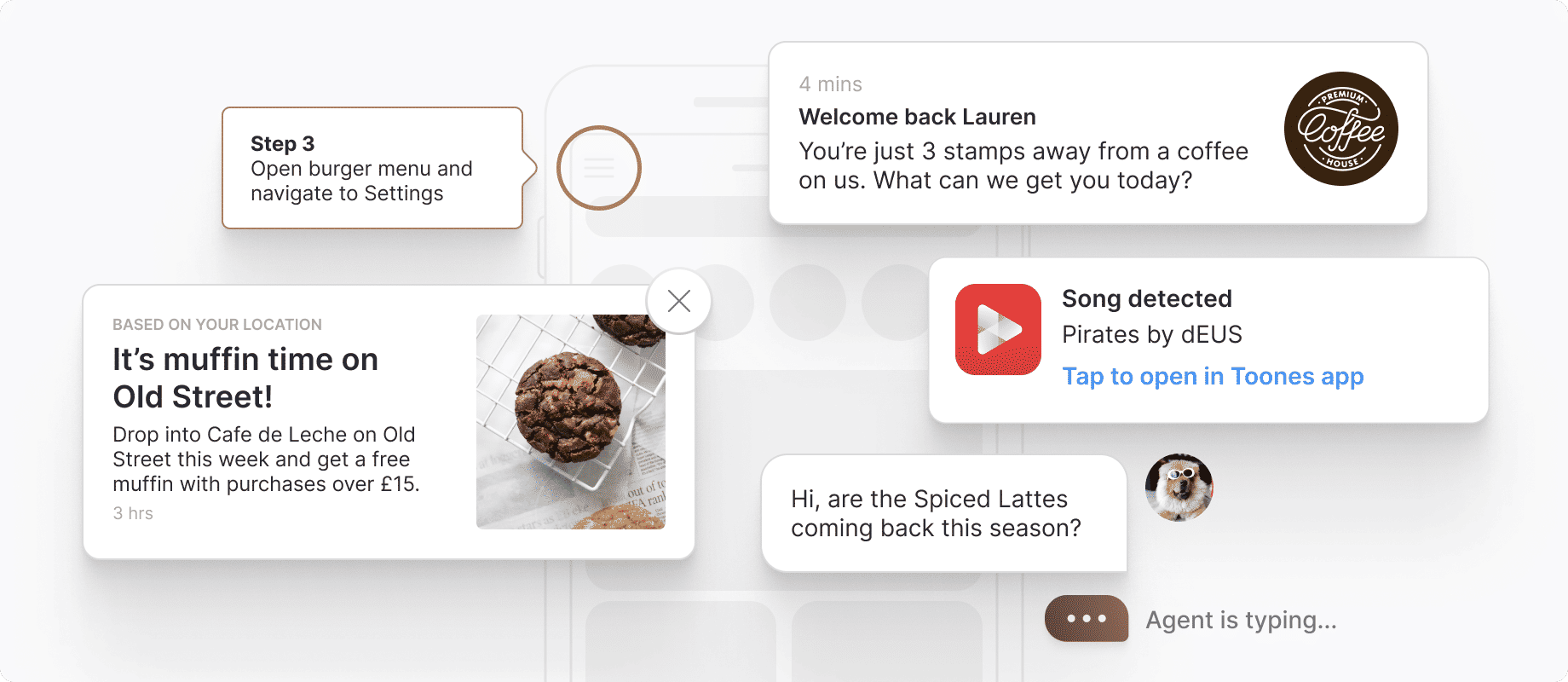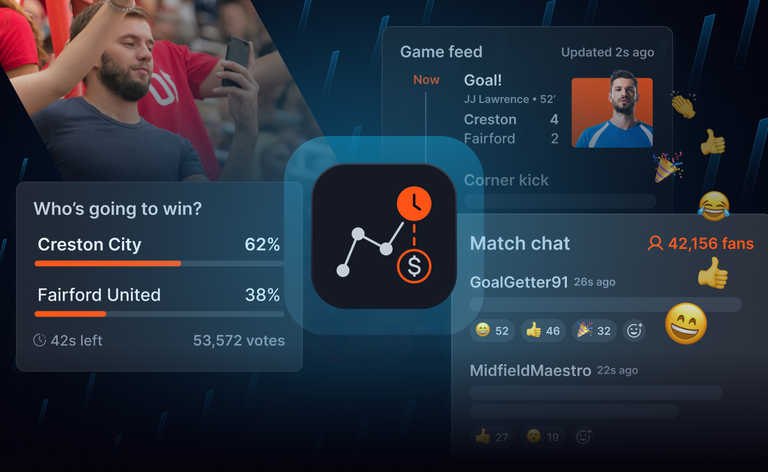Engagement can be life or death for software products. How much value an app delivers to users drives investment decisions and sales revenue. And because engagement and value are two sides of the same coin, measuring one can help you understand the other.
Across the tech industry, Product Owners use a common set of product and user engagement metrics to show just how much value products deliver. In this article, we’ll look at how you can use them to measure engagement, identify product weaknesses, opportunities, and ultimately deliver more value both to users and your company.
What do we mean by product engagement and user engagement?
Engagement is more than merely using a product. Researchers at the University of Glasgow define engagement as the “emotional, cognitive and behavioural connection” between a person and the product they’re using. In other words, the product takes on an importance in the lives and work of the people who use it.
For people building digital products, there are two types of engagement that matter: product engagement and user engagement.
What is product engagement?
Product engagement is about how much engagement a product and its features get from active users. It is measured as a way to understand what adds value and what detracts from the overall product experience.
For example, measuring product engagement to identify sticking points in an app can help surface UX or product-market fit issues. If an unusually high number of people quit an app part way through a process, it is a strong indication that there’s a problem with how that part of the product works.
What is user engagement?
User engagement, on the other hand, looks at the value the product gives both to the user and to the organization behind the product. One way to track user engagement is to measure how often people use the product, typically on a daily or monthly basis. Another way is to look at the relationship the user has with the product, such as how much revenue they generate.
Looking at engagement from the user’s perspective helps to tell a broader story about its value that can inform product and marketing decisions.
What is the difference between product engagement and user engagement?
Product engagement and user engagement are two sides of the same coin. They both measure the depth of the relationship between the product and the person using it but from different perspectives. In most contexts, the same metrics can inform a team’s understanding of both product and user engagement.
What metrics should be used to measure product and user engagement?

With the right tooling, you can measure almost anything. And that can make it tempting to measure everything. But the risk is metrics overload. When you have too many numbers to handle, the work of interpreting them can outweigh any value they might deliver.
Selecting a north star is one way to focus your metrics. A north star is the one metric that most clearly indicates the success of the product. For a newly launched app, where market penetration matters most, that might be new user sign-ups. A more mature product, on the other hand, might be at risk of churn and so focus on daily active users.
With a strong north star metric in place, it’s easier to select which numbers really matter. Let’s look at some example measurements. Each of these could form your north star or act as a supporting metric.
Metrics for product engagement
Product engagement metrics tell the story of how the product itself performs, including the relative popularity of particular features. They’re also particularly useful for identifying design and user journey issues. For example, say there’s one feature that very few people use. The right product metrics will bring that to your attention but they won’t necessarily tell you what the problem is.
Common product engagement metrics include:
- Activation rate: The proportion of people who start to use the product following onboarding. A low rate here can expose user experience problems or more fundamental issues, such as a mismatch between user expectations and the product’s ability to deliver.
- Usage depth: What proportion of users dive deeper into the more sophisticated parts of your product? If most users only touch the surface, then it could be that your UX is too hard to navigate, the features aren’t well enough signposted, or that the demand simply isn’t there.
- Exit point: Where do people tend to end a session using the product? This can point to problems in the product or simply show that most people complete their task as intended.
- Time in product: How long the average person spends working with your product. The intent and model of the product will help you decide if a higher or lower number here is better.
- Customer churn: The percentage of users that stop using the product over a period of time. Poor product engagement will lead to higher churn.
Metrics for user engagement
User engagement metrics look at user behavior and how that relates to the product. Those metrics help tell the story of how the product affects its users and whether there are different groups of people within the user base. For example, user engagement metrics could help you to identify that people from a particular region are more likely to use one set of features than those from another area. In turn, that could inform your marketing and localization efforts.
Typical user engagement metrics include:
- Daily or monthly active users: The number of people actively using the product over a period of time. This shows your app’s “stickiness”. A higher number of active users per day, week, or month is a good proxy for the value that those users get from the product.
- Net Promoter Score (NPS): Extensively used by companies to understand customer sentiment, NPS asks people to rate how likely they are to recommend the service or product to a friend. While the numbers themselves are open to interpretation, the trend of how they change over time can unveil improvements or deteriorations in user happiness.
- Customer acquisition cost (CAC): The average amount spent on getting someone to become a customer.
- Lifetime value (LTV): How much revenue a customer generates during the entire time they use the product. If CAC is higher than LTV, that can be supported by investment from elsewhere. Looking at your LTV to CLV ratio, combined with the ongoing cost of servicing a user, shows the profitability of a particular user.
- Engagement by user location: Segmenting these metrics to look at engagement based on where users are located (or other segments like business size, or user persona) can help identify how different sets of users make use of the product, as well as the revenue they generate.
How to improve product and user engagement
Improving product and user engagement has become almost a science. With the right metrics, Product Owners have learned which engagement strategies work best for their particular niche. One dividing line is between websites and apps.
With the growth in the number of dedicated apps for products, retailers, and services, user expectations between apps and websites have changed. Similarly, the engagement techniques available to us when working with websites and apps differ thanks both to the technologies involved and the ways that people interact with them.
Here are ten ways to improve your product and user engagement, with five tailored to website experiences and five for apps.
Five ways to improve website product and user engagement

Let’s start with websites, as it’s a pretty broad category, encompassing both web apps, social media, and your favorite news site. It’s worth noting, though, that many of the techniques to drive product user engagement for websites also apply to apps. Here are five that are particularly well suited to website engagement.
- Deliver multiplayer collaboration: Realtime collaboration brings people together to work on the same projects at the same time. Website applications such as Figma and Miro drive engagement by enabling people to work more efficiently through multiplayer collaboration. Of course, this doesn’t apply only to websites but also to native apps. Figma in particular has seen great success delivering multiplayer collaboration through a web app, native mobile apps, and a desktop app.
- Reward referrals: Referrals drive engagement in two ways. They encourage existing users to come back to the app in order to make referrals and they also encourage new users to join. Dropbox, for example, rewards existing users with additional storage space for each person they successfully persuade to sign-up.
- Provide interactive features: Quizzes, polls, games, and similar interactive features provide a meaningful reason for people to come to a website. Buzzfeed is, perhaps, one of the best known sites using quizzes to drive user engagement, with many quizzes attracting more than a million people.
- Showcase user generated content: Placing the user at the center of the story helps them to feel a sense of connection with the website. Research by software company TINT shows that 41% of marketers see user generated content as important to driving engagement. Sites such as TripAdvisor make user generated content central to their business.
- Enable social media sharing: Making it easy for people to share content from the website through social media is a low cost way of driving website engagement. Newspaper The Guardian provides a link to share the current article on Twitter or Facebook, with social media driving around a third of the newspaper’s website visits
Five ways to improve app product and user engagement

Apps have an immediate engagement advantage over websites. By being installed directly on the device, they can access functionality that is either harder or impossible for websites to use, such as push notifications, location services, and the camera. That opens the way for more immersive, personalized experiences.
Here are five suggestions for ways to improve app product and user engagement.
- Personalized offers and content: Draw on past user behavior to tailor special offers, reminders, and content that can then be streamed in realtime to the device. Visitors to Starbucks cafés, for example, can use the chain’s app to check which song is currently playing in that location.
- Location-based services: With the right permissions, an app can trigger features depending on where the device is located. That could be special offers, sent through push notifications, or triggering functionality that makes sense only in specific locations. UK based hardware retailer Screwfix’s app detects when the customer arrives at one of the chain’s stores and invites them to check-in. Staff at the store are then alerted to prepare the customer’s order ready for collection. That both improves efficiency and drives the customer’s focus to the app.
- In-app messages: Whether for communication with the app vendor or between users of the service, such as in a two sided marketplace, in-app messaging provides an ongoing reason for people to return to an app. AirBNB connects hosts and guests together using in-app messaging, meaning that engagement with the app continues beyond the initial search and booking process.
- Gamify the experience: Rewarding users with badges, levels, and other achievements, is a proven way of increasing app engagement. Language learning app Duolingo rewards learning progress with gems. Similarly, Duolingo encourages habit building by tracking how many days in a row each person has completed a lesson.
- Improve activation through smoother onboarding: Identify the most points where new users drop off during onboarding and improve the user experience through user interface changes, in-app help, or other tools such as progress meters. LinkedIn’s app takes a new user by the hand to get the basics of their account set-up, while using a “profile strength meter” to encourage people to go back and fill out additional information.
Tools to help implement changes to drive product and user engagement
“How to increase product engagement” is a core question for Product Owners, Marketers, and Engineers responsible for both websites and apps. As such, a rich ecosystem of tooling has developed over the years to help execute on engagement strategies and also to understand the results.
Here are four tools that can help you to implement the changes necessary to drive product and user engagement.
- Hubspot: As a marketing automation platform, Hubspot helps boost engagement by making it easy to create dedicated landing pages for campaigns. For example, using Hubspot you can email a segment of your user base and drive them to a landing page where they can refer other people who might be interested in the app.
- Split: An idea might look great on paper but prove to be less useful in practice. A/B tools, like Split, let you put different versions of a page or workflow to the test. By showing one version to some users and the other to other users, Split lets you see which techniques drive more engagement.
- Appcues: Onboarding is a dangerous time when it comes to user retention. Appcues is one of many tools that help you to build personalized onboarding flows that reduce the time it takes for a new user to get value from your product, thereby increasing engagement and reducing churn.
- Ably: Using Ably’s realtime platform, you can build collaborative features that enable people to work together, create in-app messaging systems, drive user engagement through push notifications, build interactive features such as quizzes, and more.
Using Ably to improve product and user engagement
Let’s look in more detail at how Ably can help you to drive engagement. As a realtime Platform as a Service (PaaS), Ably gives you the infrastructure and tooling to build collaborative realtime features without the upfront engineering or ongoing maintenance costs of developing in-house.
Ably is ideal for driving engagement because many of the techniques we’ve looked at in this article rely on the seamless flow of data across the global internet.
Whether it’s a fundamental shift in how your product works, such as implementing multiplayer collaboration, or you want to enhance the experience through a feature such as in-app messaging, Ably makes it easy to get started thanks to integrations with almost every popular programming language and a free developer account.





